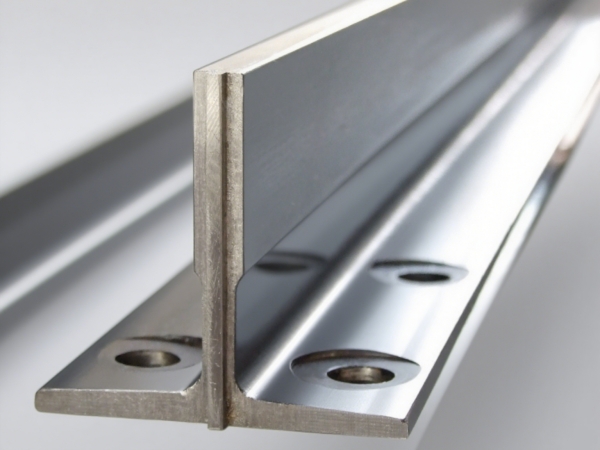If you're in the business of building or sourcing elevators, you've likely come across a key decision point: cold-drawn vs. machined guide rails. At a glance, they may seem like small components, but make no mistake—they play a critical role in elevator safety, smooth operation, and long-term reliability.
Choosing the right type of guide rail isn't just a matter of price. It involves understanding manufacturing processes, dimensional accuracy, regulatory standards, and installation factors. Whether you're working on high-speed passenger lifts or heavy-duty freight elevators, this article will help you make an informed choice.

Both cold-drawn and machined guide rails are designed to serve the same core function: to guide the elevator car and counterweight along a defined path with minimal deviation. But they differ significantly in how they’re made.
Cold-drawn guide rails are produced by pulling hot-rolled steel through a die to achieve the desired profile and finish. The drawing process refines the shape, tightens tolerances, and improves surface smoothness. This method is faster and more economical at scale. Machined guide rails, on the other hand, begin as hot-rolled or cold-formed blanks and are then finished using precision milling machines. Every surface is cut to exact specifications, resulting in superior dimensional control, especially on working surfaces like the tongue and base. In short, cold-drawn is more about forming under tension; machined is about shaping through precision removal.
Now let’s get into the practical differences—what you’ll notice not just in specs, but in real-world performance and cost:
| Feature | Cold-Drawn | Machined |
| Dimensional Tolerance | Moderate (±0.1–0.3 mm typical) | High Precision (±0.02–0.1 mm) |
| Surface Finish | Smooth but may require grinding | Polished and milled to spec |
| Cost | Lower | Higher |
| Production Speed | Faster | Slower |
| Weight Tolerance | More variable | More uniform |
| Common Applications | Low- to mid-rise elevators | High-speed, high-rise elevators |
Cold-drawn rails are typically used in standard passenger elevators, service lifts, or low-speed applications. They meet basic functional requirements at a competitive cost.
Machined rails are the go-to for high-rise, high-speed elevators where vibration control, alignment, and superior ride comfort are critical. You’ll often see these in office towers, premium residential buildings, or hospitals.
Regardless of the type you choose, elevator guide rails must comply with safety and performance standards. Two of the most important global frameworks are:
EN 81-20/50 (Europe)
ASME A17.1 / CSA B44 (North America)
Both cold-drawn and machined rails can meet these standards—but not all products are created equal.
Machined rails generally exceed the flatness and straightness tolerances required by these standards, making them a safer bet for projects in regulated markets.
Cold-drawn rails may require secondary grinding or straightening if the raw process doesn’t achieve required precision, especially for car guides in passenger elevators.
If you’re exporting or working with international partners, always ask for test reports, compliance certificates, and reference installations—especially if choosing cold-drawn options.
There's no one-size-fits-all answer here. The "better" rail depends entirely on your project’s technical and commercial requirements.
Choose cold-drawn guide rails if:
1. Your project is cost-sensitive
2. The elevator speed is ≤1.6 m/s (standard low- to mid-rise buildings)
3. You’re working in less vibration-sensitive environments
4. Installation flexibility is more important than ultra-precision
Choose machined guide rails if:
1. Your system runs at high speeds (≥2.5 m/s)
2. Smooth ride quality and minimal vibration are critical
3. Your project involves high-rise buildings or tight shaft tolerances
4. Compliance without post-processing is required
A surprising number of modern elevator projects use a hybrid approach, cold-drawn rails for the counterweight side and machined rails for the car side. It’s a way to balance cost and performance without compromising safety or code compliance.
Cold-drawn and machined elevator guide rails both have their place in modern vertical transportation, but they serve different needs. Cold-drawn rails are fast to produce, cost-effective, and fit for standard applications. Machined rails, with their exceptional precision, are built for the demands of high-rise, high-performance systems.
If you’re a manufacturer or procurement lead, the key is to evaluate not just the rail type but also the supplier’s ability to meet your quality requirements, documentation needs, and post-sale support. Sometimes what seems like a small component can have a big impact on your system’s long-term reliability.